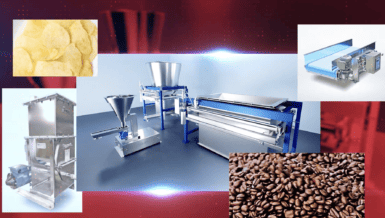However, given the risk of recontamination, it is crucial to maintain hygiene in subsequent process steps, which often involve the addition of nutrients and liquids through vacuum coating technology.
Adding nutrients that deeply penetrate the core of the kibbles
The introduction of vacuum coating technology has revolutionized the way pet food is enriched. This technology allows for the deep penetration of healthy oils and fatty acids, such as omega 3 and 6, directly into each kibble. Kibbles are mixed under a vacuum, and the necessary fats and other nutrients are sprayed on. When the vacuum is released, these additives penetrate deep into the core of each kibble.

After this nutritious infusion, a slurry layer can be applied to enhance the aroma and taste, making the kibbles irresistible to pets. To address the potential stickiness from the slurry, a powder coating can be applied, yielding a final product that is both dry and strong. Before this innovation, enriching kibbles with oils and fatty acids was impractical due to absorption limits. Now, with vacuum coating, up to 80% more of these vital nutrients can be integrated into every kibble.
Innovations in hygienic vacuum coating

Preventing recontamination demands strict hygiene measures. Fortunately, recent years have brought about significant innovations in hygienic mixing and vacuum coating. The latest systems incorporate features specifically designed to prevent Salmonella growth. These include body heating, hot and clean air injection systems, and CIP (Clean-in-Place) cleaning systems. Such advancements ensure the equipment can be thoroughly cleaned and sanitized without the need for disassembly. This maintains the highest standards of hygiene and safety in pet food production while minimizing downtime and operational disruptions.
Everyone wants the best for their pet. Therefore, each kibble must be perfectly safe and full of healthy nutrients, vitamins, and minerals. Vacuum coating technology offers producers the best of both worlds: pet food that is full of essential fats and flavors without a greasy residue, and even more importantly, pet food that is safe from pathogens such as Salmonella.










































